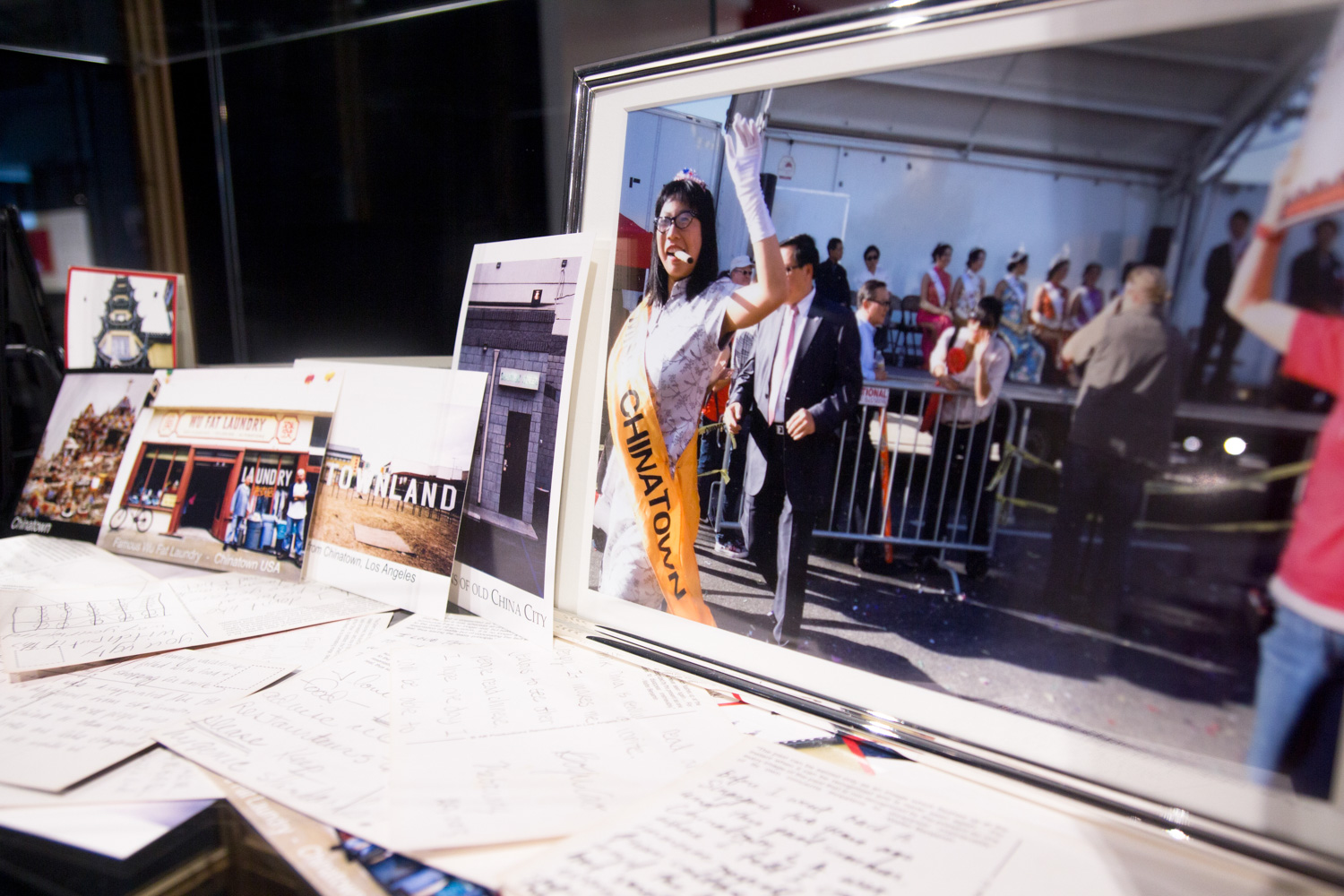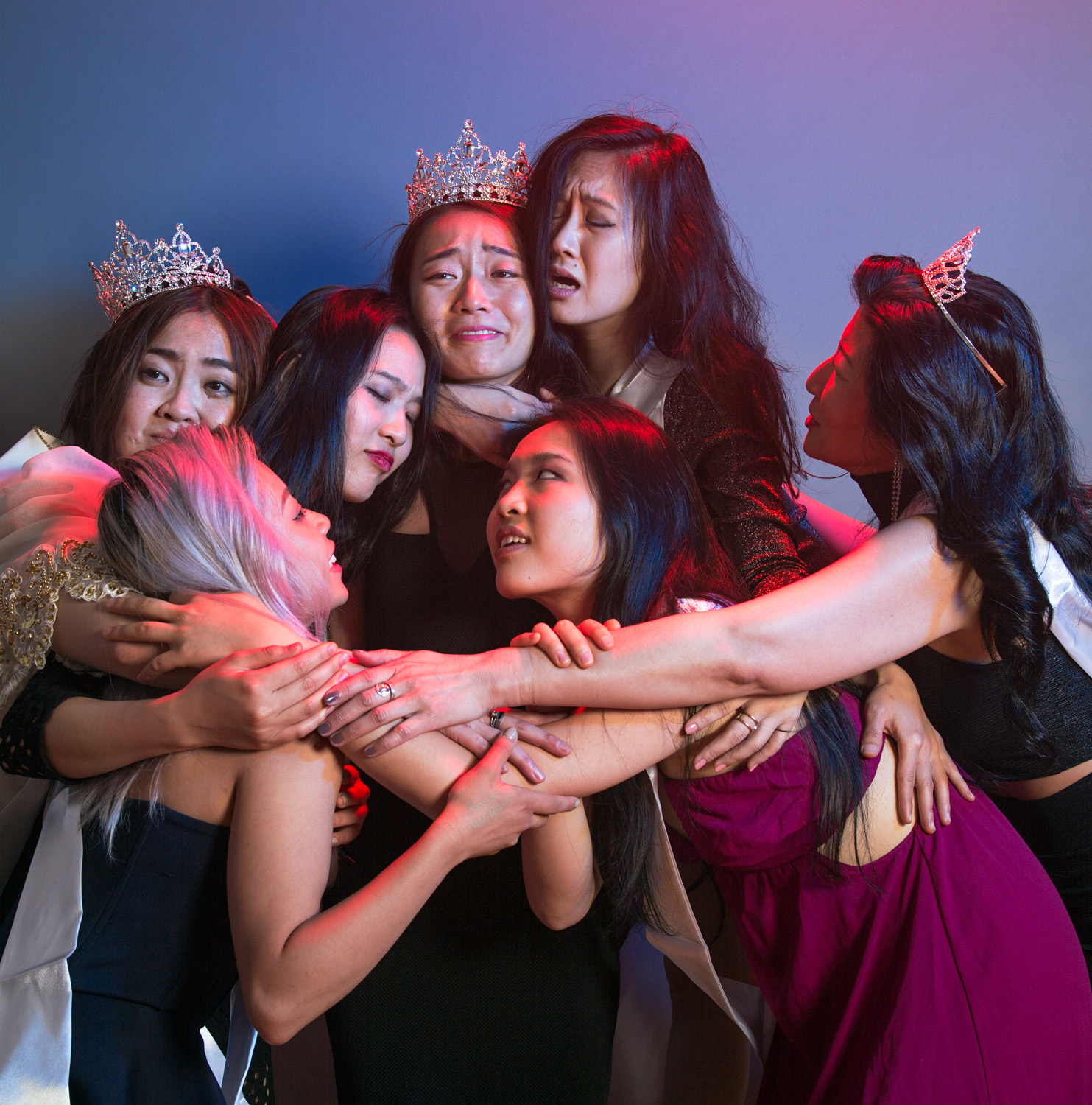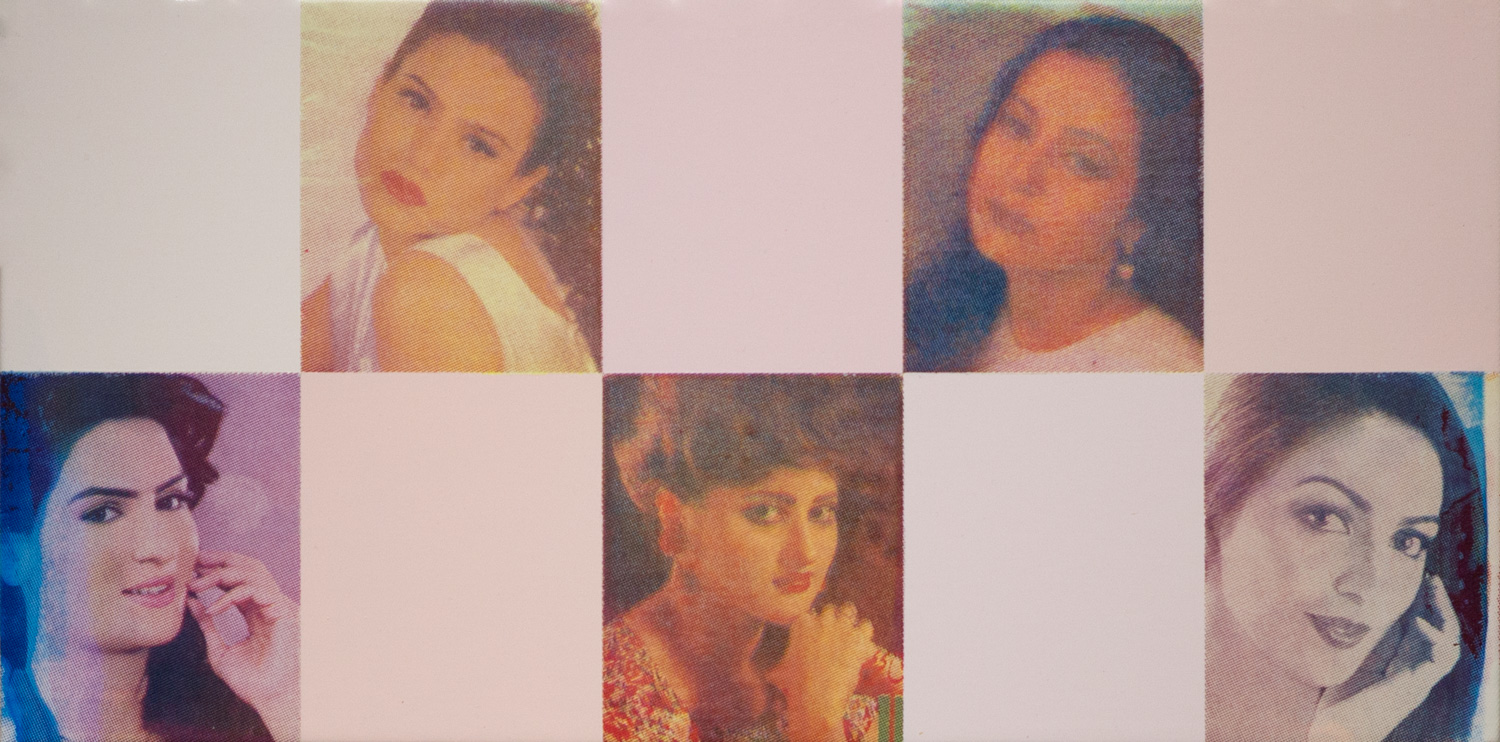Shows
“In Search of Miss Ruthless”


“In Search of Miss Ruthless” at Hong Kong’s Para Site art space was an ambitious endeavor, designed as an artistic exploration of notions of beauty and gender through the format of a pageant. The show revolved around Miss Ruthless, a fictional character from the future that “can represent our beautiful Hong Kong up on the world stage.” Featuring 23 artists who presented existing and newly commissioned works alongside archival documents, an experimental audio guide and two web projects, this curatorial proposal by Hera Chan and David Xu Borgonjon was selected from a pool of applications through the art space’s emerging curators program.
Who was to become Miss Ruthless? This was not immediately evident, even with the curators’ carefully drafted manifesto included in the catalog. The abstract nature of the pageant contestant gave the curators room to bring together artworks of varying themes, many of which were thought-provoking topics in themselves, including the competition’s history and culture seen through an Asian lens, perceptions of beauty, the ties between the Hong Kong community and Chinese diaspora, gender roles and queer identity, and even the competition’s “democratic” voting element as a foil for Hong Kong’s political plight.

Some of the juxtapositions were fitting, such as Kristina Wong’s series (2001–12), which involves a display of photos, postcards, videos and costumes documenting her performance as a bespectacled, seemingly vulgar Chinatown beauty queen to take a stab at Asian Americans’ prescribed gender roles and Orientalism—with Tse Ka-man’s photographs, one of which features Asian-Pacific Islander women wearing expressions ranging from elation to exhaustion, locked in an embrace in New York following a beauty pageant in Untitled (Embrace) (2017). Both successfully served their purpose in tackling questions of beauty and gender in a broader Asian diaspora context within the frame of beauty pageants.
Other works shifted the focus back to Hong Kong. Bobby Yu Shuk Pui’s Miss Perpetual: Form Piece (2017) features portraits of the artist pasted onto a decade’s worth of Miss Hong Kong application documents, while archival footage from the 1985 competition plays on an overhead television set, demonstrating the changes and continuity in Hong Kong’s ideals of femininity. The application’s requirement that the contestants must be unmarried, not pregnant and have never given birth to a child also echoed a lyric in Beauty Election (Miss Hong Kong 2015, Louisa Mak, on Revising the Contestant Contract) (2017), one of the songs written by Wong Kit Yi that was displayed on a colored wall panel, in which Miss Hong Kong 2015 Louisa Mak discusses the unfairness of the rule. In a humorous twist, one item displayed in Para Site’s archives was a memoir written by Mak’s mother, toying with other mother’s desires to raise beauty queens with straight-A’s—and maybe even profit from the results.
A number of artworks fell under the umbrella of beauty and feminism, but had little to do with beauty pageants. Hong Kong artist duo Come Inside’s I Sing My Heart for You (2017), with its nauseatingly girlish, shocking-pink, heart-shaped karaoke stage decorated with colorful balloons and feathers, was a visually captivating piece that took the portrayal of gender roles to extreme ends, but its connection with the theme or its neighboring pieces was unclear. Near the stage was Amna Asghar’s works, including Women Prefer Soft Colors (Tints) (2017), which shows five rectangular portraits of women striking poses plastered onto a background of varying pale rose shades. While the piece worked well in showcasing a facet of Pakistani disaporic culture, its relationship with the rest of the show felt tangential, although it was saved by the fact that the women’s expressions recall those of beauty pageant contestants found elsewhere.
Similarly out-of-place was Xiyadie’s Door (2016), a folk papercut which shows two men engaged in oral sex while a woman cares for her baby behind a door; and Dachal Choi’s Days You Need Love, Fortune and Money (2017), brightly lit LED lightboxes depicting companion-rental service providers stylized to resemble traditional Chinese calendars. Both were interrogations of relationships in a specific cultural context, rather than channels for commentary on topics of beauty. These otherwise intriguing artworks, which felt distanced from the premise, gave the impression that they were added as an afterthought, creating confusion among viewers who sought to unveil the identity of Miss Ruthless.
The show as a whole did not drop sufficient hints to allow viewers to make an intelligent guess, but perhaps this was the intention from the beginning—like Miss Ruthless, notions of beauty are vague and not necessarily comprehensible. While the depth of ideas explored in some artworks was at times compromised by the breadth of the subject matter covered by different works, the exhibition demonstrated the young curators’ perfectionism in the realization of their concepts and their eye for spotting great artists and work.

“In Search of Miss Ruthless” is on view at Para Site, Hong Kong, until September 10, 2017.







